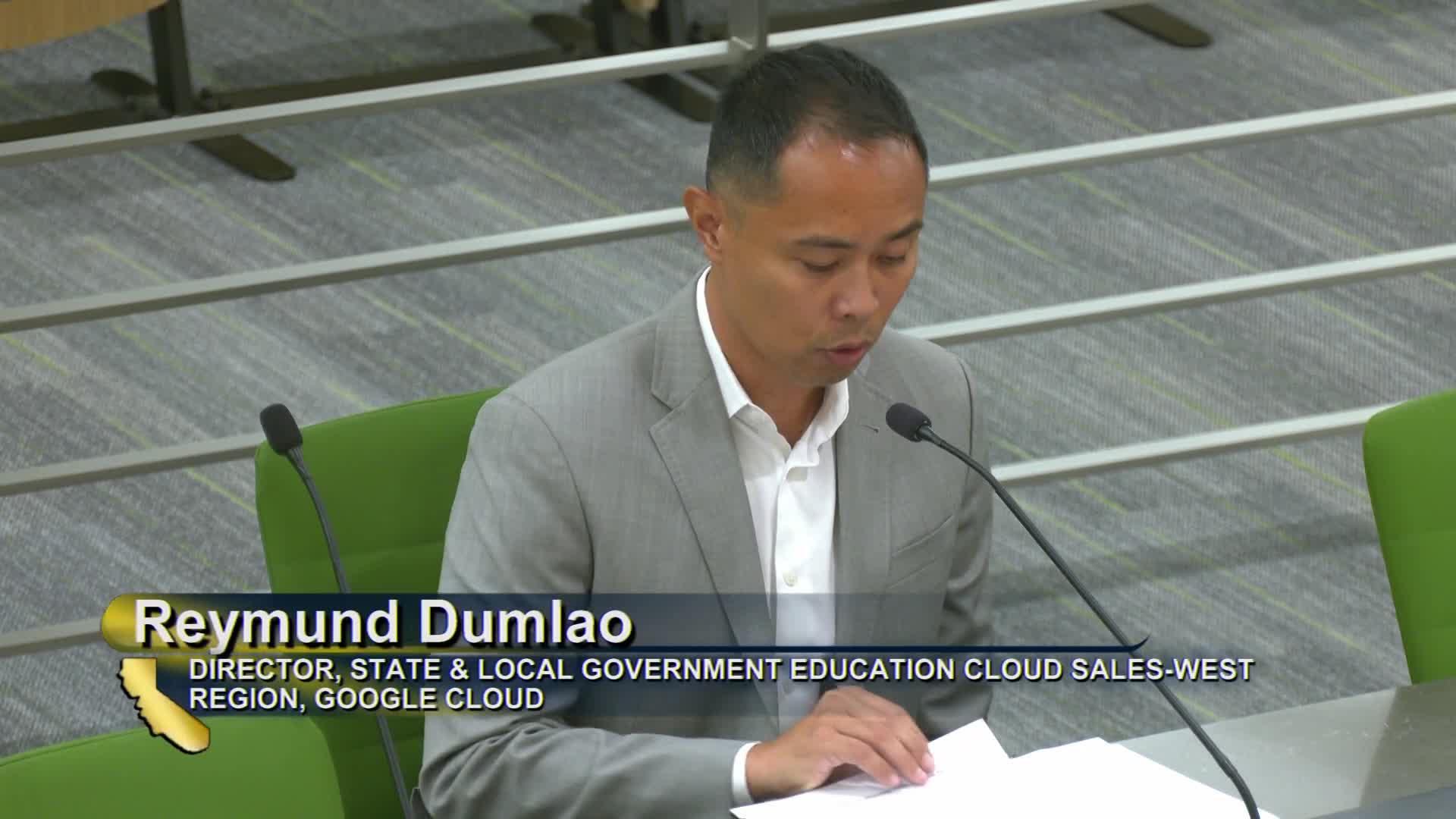Google harnesses AI to revolutionize emergency response systems
August 28, 2024 | Governmental Organization, Standing Committees, California State Senate, Senate, Legislative, California
This article was created by AI summarizing key points discussed. AI makes mistakes, so for full details and context, please refer to the video of the full meeting. Please report any errors so we can fix them. Report an error »

In a recent government meeting, representatives from Google discussed the transformative potential of artificial intelligence (AI) in emergency management. Highlighting the development of early warning systems and predictive analytics, the presentation emphasized how Google Cloud's AI platform can assist emergency management agencies in creating custom predictive models. These models are designed to analyze extensive data sets, identify patterns, and generate actionable insights to anticipate emergencies and optimize response strategies.
The integration of AI into existing emergency management workflows aims to enhance situational awareness and decision-making, ultimately saving lives during crises. Google is collaborating with various emergency management agencies and non-profit organizations to develop AI-powered tools that streamline response processes. Notably, the SOS alerts feature, integrated with Google Search and Maps, provides critical information during emergencies, including evacuation routes and shelter locations.
The presentation also highlighted the role of machine learning algorithms in analyzing real-time data on traffic and infrastructure damage, which can help identify optimal routes for emergency vehicles and prioritize resource allocation. Effective communication during crises was underscored as essential, with Google’s public alert systems delivering timely alerts to affected individuals.
Furthermore, Google is leveraging its natural language processing capabilities to analyze social media and news data, helping to identify emerging trends and combat misinformation during crises. The company is also committed to supporting long-term recovery efforts through AI tools that assess damage and prioritize recovery initiatives.
In conclusion, Google representatives expressed their commitment to using AI for good in emergency management, emphasizing the importance of building trust with users and investing in innovative tools to enhance public safety and resilience against natural disasters. The meeting concluded with an invitation for questions from committee members, indicating ongoing engagement and collaboration in this critical area.
The integration of AI into existing emergency management workflows aims to enhance situational awareness and decision-making, ultimately saving lives during crises. Google is collaborating with various emergency management agencies and non-profit organizations to develop AI-powered tools that streamline response processes. Notably, the SOS alerts feature, integrated with Google Search and Maps, provides critical information during emergencies, including evacuation routes and shelter locations.
The presentation also highlighted the role of machine learning algorithms in analyzing real-time data on traffic and infrastructure damage, which can help identify optimal routes for emergency vehicles and prioritize resource allocation. Effective communication during crises was underscored as essential, with Google’s public alert systems delivering timely alerts to affected individuals.
Furthermore, Google is leveraging its natural language processing capabilities to analyze social media and news data, helping to identify emerging trends and combat misinformation during crises. The company is also committed to supporting long-term recovery efforts through AI tools that assess damage and prioritize recovery initiatives.
In conclusion, Google representatives expressed their commitment to using AI for good in emergency management, emphasizing the importance of building trust with users and investing in innovative tools to enhance public safety and resilience against natural disasters. The meeting concluded with an invitation for questions from committee members, indicating ongoing engagement and collaboration in this critical area.
View full meeting
This article is based on a recent meeting—watch the full video and explore the complete transcript for deeper insights into the discussion.
View full meeting
